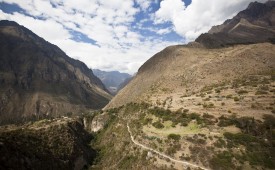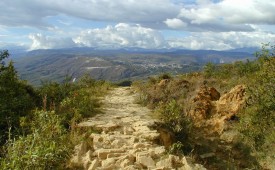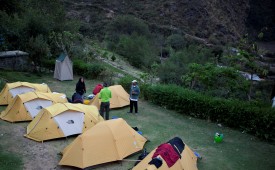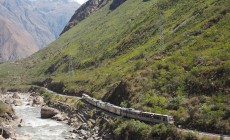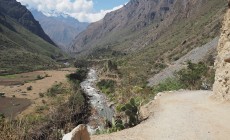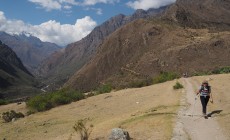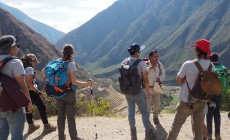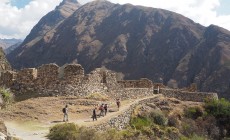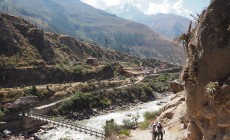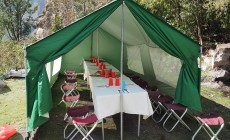-
Latin America
Latin America
- Countries (hidden space)
- Galapagos & Ecuador
- Guatemala
- Mexico
- Panama
- Peru
- Popular Attractions
- Machu Picchu
- Inca Trail
- Easter Island
- Galapagos Islands
- Patagonia
- Rio de Janeiro
- Iguazu Falls
-
Africa
Africa
- Spacer Africa
- South Africa
- Zimbabwe
- Popular Attractions
- Cape Town
- Okavango Delta
- Sossusvlei Dunes
- Victoria Falls
- The Kruger
- The Garden Route
- Masai Mara
-
Asia & Middle East
Asia & Middle East
- Asia
- Borneo (Malaysia)
- Cambodia
- India
- Japan
- Middle East
- Jordan
- Spacer Asia
- Laos
- Sri Lanka
- Uzbekistan
- Vietnam
- Popular Attractions
- Taj Mahal
- Lion Rock (Sigiriya)
- Angkor Wat
- Ha Long Bay
- Kyoto
- Petra
-
Destinations
- Latin America
- Argentina
- Bolivia
- Brazil
- Chile
- Colombia
- Costa Rica
- Galapagos & Ecuador
- Guatemala
- Mexico
- Panama
- Peru
- Asia
- Borneo (Malaysia)
- Cambodia
- India
- Japan
- Laos
- Sri Lanka
- Uzbekistan
- Vietnam
- Middle East
- Jordan
- Southern & East Africa
- Botswana
- Kenya
- Namibia
- South Africa
- Zimbabwe
- Contact Us
-
About
About
Llama Travel provides high quality holidays at the lowest possible prices.
99% recommend us Lower prices - guaranteed Financially protected by ATOL
The classic Inca Trail is a four-day trek crossing high mountain passes, ending at Machu Picchu. This is in fact only one of many Inca trails in the Cusco area, a number of which are still in use today by locals. However, this trail has become famous due to its final destination.
History of the Inca Trail
The Incas built an enormous set of trails that spanned their empire, enabling them to cross great distances relatively rapidly. These trails were well maintained, and by using chasquis (messengers), messages or goods could be sent all over the empire very quickly. Each chasqui would run a leg of approximately 10km before passing on the message to the next chasqui. For example, it was said that fish from the port of Puerto Inca, south of Nazca, could get to Cusco, 250km and many mountain passes away, in under 24 hours.
The Inca Trail to Machu Picchu
In addition to the incredible end point, the trail itself is superb. The change in scenery and vegetation, as the walk first rises to 4,200m before descending into the cloud forest, is fantastic. The trail also helps give some important background information to Machu Picchu. Rather than being a lost city, completely isolated, the many ruins on the route help to place Machu Picchu in context. The Inca Trail is enclosed in the area known as the Machu Picchu Historical Sanctuary, and is a very important natural, as well as archaeological, reserve. The flora that is seen, including many varieties of orchids, is fabulous, and there is also the chance to see some interesting wildlife, including condors if you are lucky. The whole walk is very beautiful, and it is easy to understand how it has become one of the most popular treks in the world.
The trek has become so popular, in fact, that it could hardly be called a walk in the wilderness. In addition to people on your group, up to 500 people start the trail each day, including porters and trekkers. It is impossible to walk the Inca Trail without seeing other people, so walk the trail prepared: expect beautiful ruins and stunning scenery, but do not expect an escape from other tourists. Despite this, as everybody walks the trail in the same direction, you do not actually bump into many other people.
Click to read one of customer's blogs about her experiences on the Inca Trail.
Inca Trail Safety and Regulations
The trail had been getting so crowded that it was being damaged. People were camping in many places, including those that were supposedly forbidden. Open campfires were being lit, destroying the environment, and litter was becoming a real problem. To counter this, Peru's National Institute of Culture has introduced some very strict regulations. It is now only possible to walk the Inca Trail as part of an official group through an agency with authorisation. Camping is in specific sites only. No open fires are allowed – all agencies carry natural gas cylinders for cooking. There is a limit of 200 trekkers allowed to start the trail each day, and with its increasing popularity, tickets sell out months in advance so ensure you book as soon as possible. There are checkpoints throughout the trail ensuring that regulations are being followed.
Inca Trail Alternatives
For those who do not have the time or inclination for the four-day trail, a shorter walk, The Short Inca Trail, has been introduced. We offer this as the Short Inca Trail optional excursion. This is much shorter than the full Inca Trail, being only about 14km in total, and is generally walked in one day, with the site of Machu Picchu visited on the second day. As with the Inca Trail, the Short Inca Trail must be done on an accompanied tour and the same regulations apply.
Another alternative to the classic Inca Trail is the Salkantay Trail, which is a day longer than the Inca Trail and crosses even higher passes. You can read a day-by-day account of the Salkantay Trek in this blog post.

